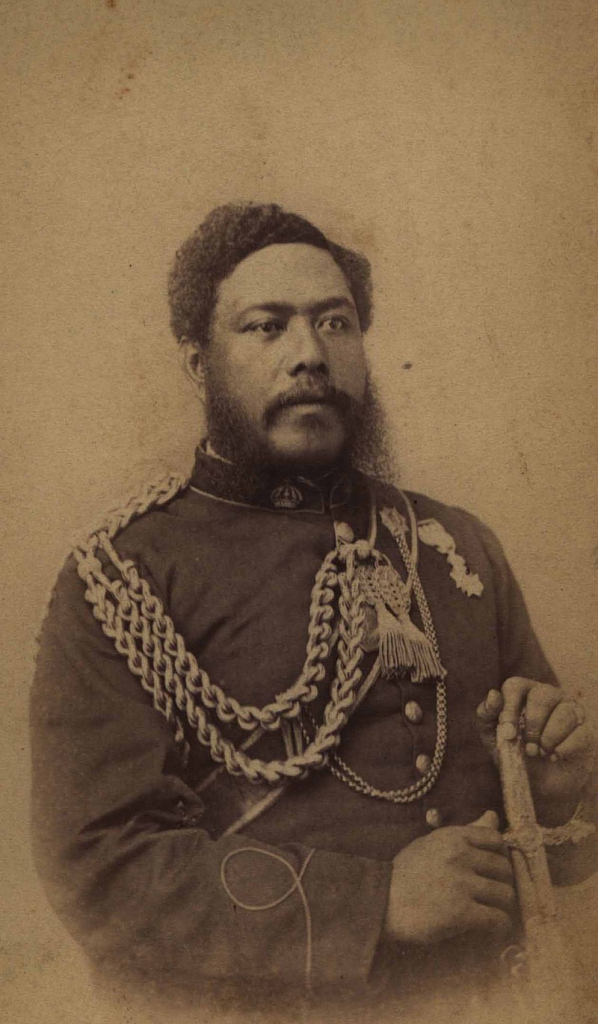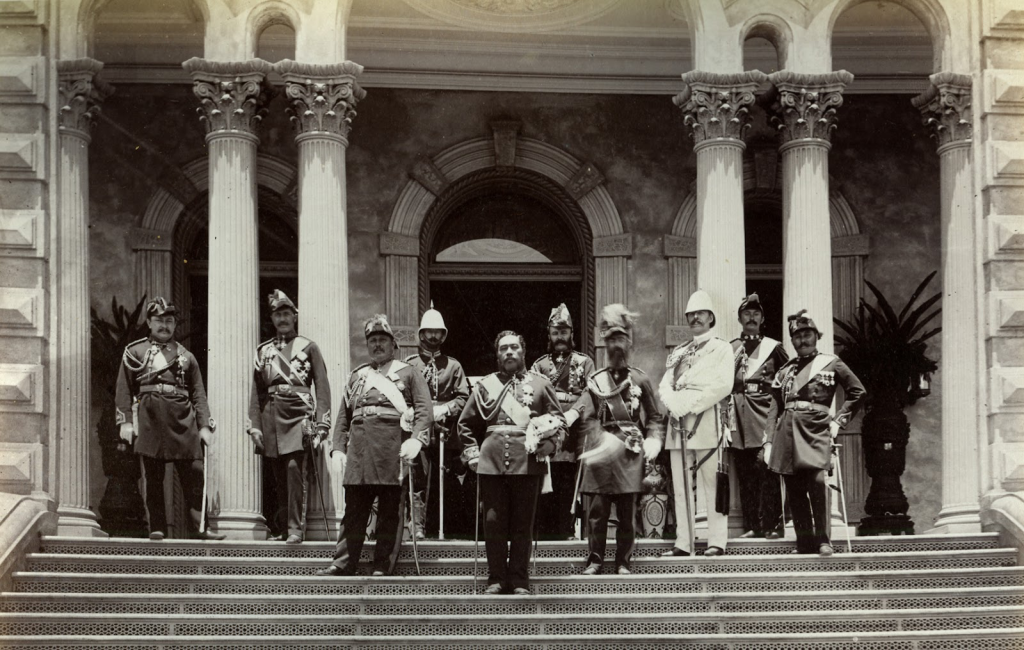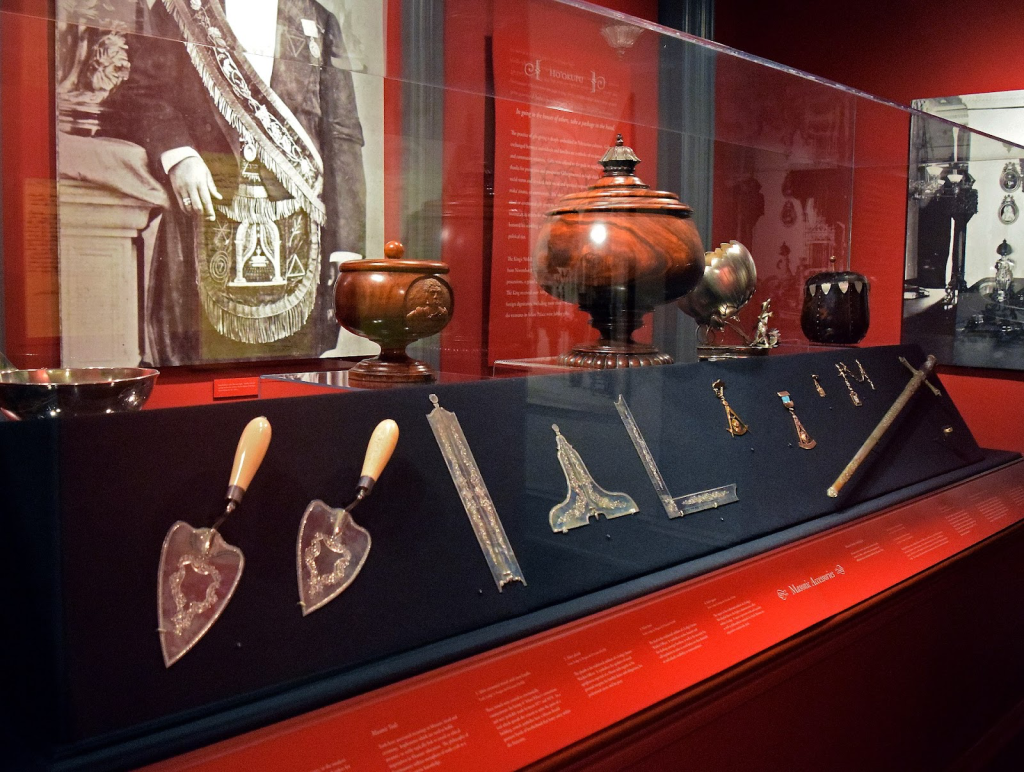
If ever there was a traveling man, King David La‘amea Kalākaua certainly earned that honor in his day. In 1881 he completed a trip around the world, making him the first monarch to complete such a trip. He met with leaders throughout Asia, the Mideast, and Europe, raising awareness of the Hawaiian Kingdom through diplomacy.
For decades before his reign, much of Hawaiian culture had been outlawed. King David sought to reinvigorate his nation’s appreciation for its culture by promoting traditional arts, medicine, music, and hula. This period became known as the first Hawaiian Renaissance, and King David earned the “Merrie Monarch” moniker for his colorful and exuberant nature.
As a leader, King Kalākaua inspired a renewed sense of the reawakening of Hawaiian pride in its heritage and culture. As a Freemason, Brother Kalākaua was passionate. He notably was one of the few Monarchs in history, particularly outside of Europe, to serve as head of state and a Masonic Lodge simultaneously. He explored the teachings and mysteries of the York Rite, the Shrine, and the Scottish Rite, becoming, along with his brother, one of the first 33° Scottish Rite Masons in Hawaii.
Childhood and Education
Kalākaua was born on November 16, 1836, at the base of Punchbowl Crater in Honolulu on the island of Oahu. His parents, Caesar Kaluaiku Kapaʻakea and Analea Keohokālole were members of the aliʻi class of Hawaiian nobility and closely related to the reigning House of Kamehameha. His family descended from Keaweaheulu and Kameʻeiamoku, who served as royal counselors to Kamehameha I during his conquest of the Kingdom of Hawaii. David’s grandfather Kameʻeiamoku is one of the royal twins depicted on the Hawaiian coat of arms.
He was one of five children, including his older brother James and younger siblings Lydia, Anna, Kaʻiminaʻauao, Miriam, and William. Before he was born, David’s parents followed the Hawaiian tradition of hānai, a form of adoption, and promised to give David to Kuini Liliha, a high-ranking chiefess. However, through a series of political vendettas, David ended up in the care of another chiefess, Haʻaheo, and her husband, Keaweamahi Kinimaka. In 1843, David’s adoptive mother died, leaving the boy all her properties. Kinimaka, his hānai father, moved with Kalākaua to the island of Maui.
At age four, Kalākaua returned to Oahu to attend the Chiefs’ Children’s School. As a student at the royal school, Kamehameha III proclaimed he and his classmates were eligible for the throne of the Kingdom of Hawaii. His classmates included his brother James, sister Lydia, and 13 royal cousins, including the future kings Kamehameha IV, Kamehameha V, and Lunalilo. It was clear from a young age he was bright and good-natured, learning to speak English from the American missionaries that taught at the school. After formal schooling, David studied law under Charles Coffin Harris, who Kalākaua later appointed as Chief Justice of the Supreme Court of Hawaii in 1877.
Military and Governmental Service
Before long, David’s military obligations overtook his legal studies. In 1852, Prince Liholiho (later Kamehameha IV) appointed Kalakaua to his military staff, and the following year, he joined the army, serving as a first lieutenant in his father Kapaʻakea’s militia. He eventually worked with Kamehameha IV’s staff and became a colonel in 1858.
Over the next 15 years, David held several posts as he gradually worked his way up through the government. He was a member of the Privy Council of State and the House of Nobles and served in the Department of the Interior. Kalākaua was appointed Postmaster General in 1963 and the King’s Chamberlain, where he served until 1869, when he resigned to return to studying law.
During this time, Kalākaua fell in love with a young widow named Kapiʻolani, Queen Emma’s lady-in-waiting. They married on December 19, 1863, in a quiet ceremony conducted by a minister of the Anglican Church.
In 1866, the American author and fellow Freemason Mark Twain visited Hawaii and met Kalākaua. He had kind words for the young Freemason, noting:
“Hon. David Kalakaua…is a man of fine presence, is an educated gentleman and a man of good abilities…He is a quiet, dignified, sensible man, and would do no discredit to the kingly office. The King has power to appoint his successor. If he does such a thing, his choice will probably fall on Kalakaua.”

Rise to Power
When King Kamehameha V died on December 12, 1872, he had yet to name his successor. By law, no chosen successor meant a new ruler had to be appointed by the legislature. The 1873 election centered on two high-ranking aliʻi, or chiefs: Lunalilo and Kalākaua. Lunalilo won the election handily but appointed Kalākaua as colonel on his military staff. During Lunalilo’s reign, Kalākaua remained active in the nation’s politics. Lunalilo had no heir and failed to appoint a successor before he passed away the following year.
Because of Kalākaua’s popularity and his support for Lunalilo during his reign, he was positioned to do well in the new election. Kalākaua was elected by the Legislative Assembly by a margin of 39-6, despite significant support to have Queen Dowager Emma, the widow of Kamehameha IV, rule. Kalākaua was sworn in the next day and sparked a riot by Queen Emma’s supporters. With no standing army, the new king turned to American and British military forces docked in the harbor to quell the uprising.
Reign & 1881 World Tour
Kalākaua’s priorities were reinvigorating Hawaiian pride in its culture and traditions and improving trade and the economy. Within a year of his election, he negotiated the Reciprocity Treaty of 1875, a free trade agreement between the United States and Hawaii which allowed products to be exported to the US duty-free.
He also became the first reigning monarch to visit America, attending the first White House state dinner, which was hosted by President Ulysses S. Grant. King David negotiated a treaty in 1875 which ultimately gave the United States exclusive use of Pearl Harbor to the United States. This treaty dramatically increased the kingdom’s income. In 1874, Hawaii exported $1,839,620.27 in products, which increased by 722% to $13,282,729.48, by the last year of his reign.
In 1881, King Kalākaua began a 281-day journey around the world in an effort to secure the importation of contract labor for Hawaiian plantations. The king first went to California and then sailed to Asia where he spent four months opening contract labor dialogue in Japan and China. His journey then took him through Southeast Asia and Europe, sightseeing and opening diplomatic and trade channels along the way. When he returned home, the nation celebrated his successful attempt at bringing global attention to his small nation.

Freemasonry
1874 was quite a year for Kalākaua. He had been a Freemason for years, and his involvement in the craft was well-known even before he took the throne. As the reigning king, he and his brother-in-law John Owen Dominis established the Ancient & Accepted Scottish Rite in Hawaii. Kalākaua and Dominis were the first 33° Freemasons in the Hawaiian Islands. That same year, King Kalākaua became the first Most Wise Master of the Chapter of Rose Croix.
In 1880, Kalākaua received the Grand Cross of the Court Honor, the highest individual honor that the Supreme Council of the Scottish Rite of Freemasonry can bestow.
Several years later, the first formal dinner at the newly built ‘Iolani Palace was a Masonic event. He also converted part of the Palace’s attic into a Lodge meeting space and Masonic Temple. He notably leaned into Freemasonry during public events, mixing traditional Hawaiian imagery and rituals with Masonic symbols. When he traveled abroad, he sought Masonic temples and met with other prominent fraternity members.
Building ‘Iolani Palace
By the time Kalākaua became king, the royal palace was in a state of disrepair. He ordered it destroyed and for a new one built in its place: ‘Iolani Palace. Today, it’s the only royal palace on US soil. Construction began in 1879, and at the time, King Kalākaua was Master of the Freemason Lodge Le Progres de L’Oceanie. He chose December 31, 1879, the 45th birthday of Queen Kapiʻolani, as the date for the cornerstone laying ceremony and charged his brethren with orchestrating the palace ceremonies.
The Freemasons of Hawaii did not disappoint, and the parade for laying the cornerstone was one of the largest seen in Honolulu’s history. During the ceremony, the Freemasons presented King Kalākaua with Masonic working tools, including a plumb bob, level, square tool, and a trowel. Once the palace was complete in 1886, Brother Kalākaua hosted 120 members of his lodge for a Masonic meeting.
Death and Legacy
Despite his ailing health, Kalākaua sailed to California on November 25, 1890. Shortly after arriving in San Francisco, the king had a stroke and was placed under the care of George W. Woods, surgeon of the United States Pacific Fleet. Despite his frail condition, Kalākaua insisted on attending his initiation at the Ancient Arabic Order of the Nobles of the Mystic Shrine (A.A.O.N.M.S.) on January 14.
Within a few days, he slipped into a coma and passed away on January 20, 1891, from Bright’s Disease. His remains reached Hawaii on January 29, along with the news of his passing, and his designated heir-apparent, Liliuokalani, ascended to the throne. King David Kalākaua was buried in the Royal Mausoleum at Mauna ʻAla on February 15, 1891.
The reign of King Kalākaua kickstarted the first Hawaiian Renaissance. His passion for Hawaiian traditions reignited a nationwide appreciation for Hawaiian culture. Following years in which dancing the hula was forbidden and punishable by law, Kalākaua invited performers to his coronation. He also revived the Hawaiian martial art of Lua and surfing. His commitment to maintaining and promoting the traditions of his people and Freemasonry is an inspiration to his brethren and Hawaiians to this day.
What other Freemason’s should we highlight for Asian American Pacific Islander Month? Email OhioLodgeLife@Freemason.com!